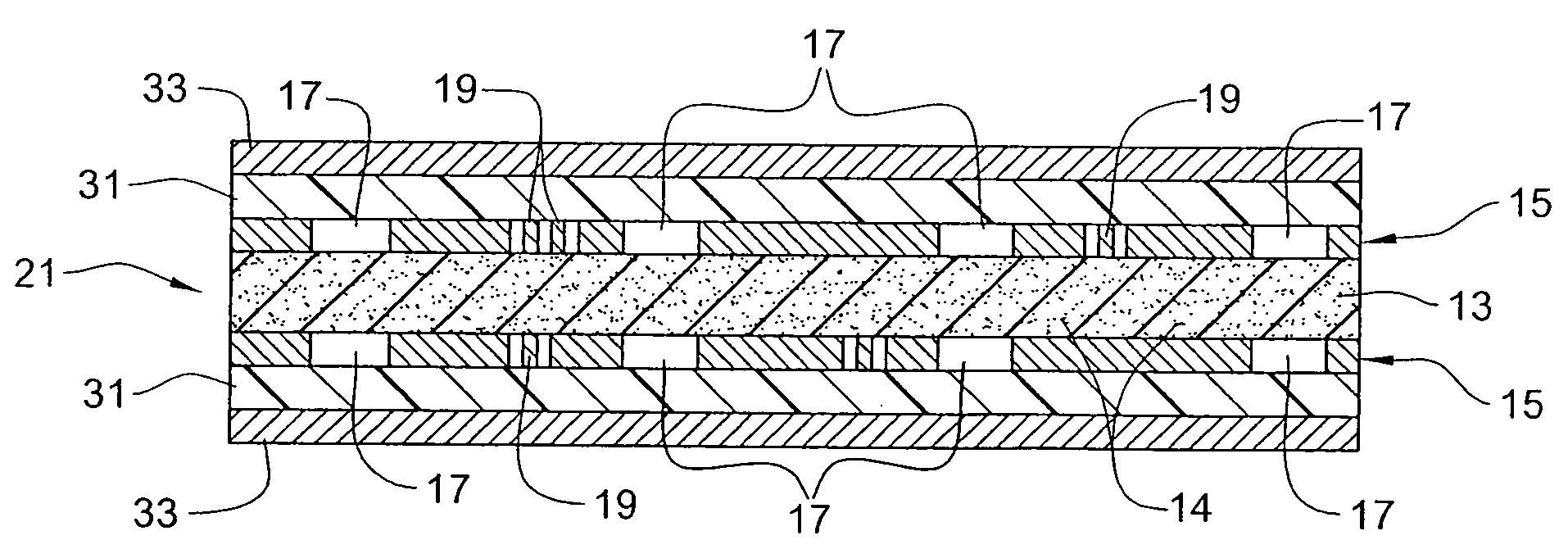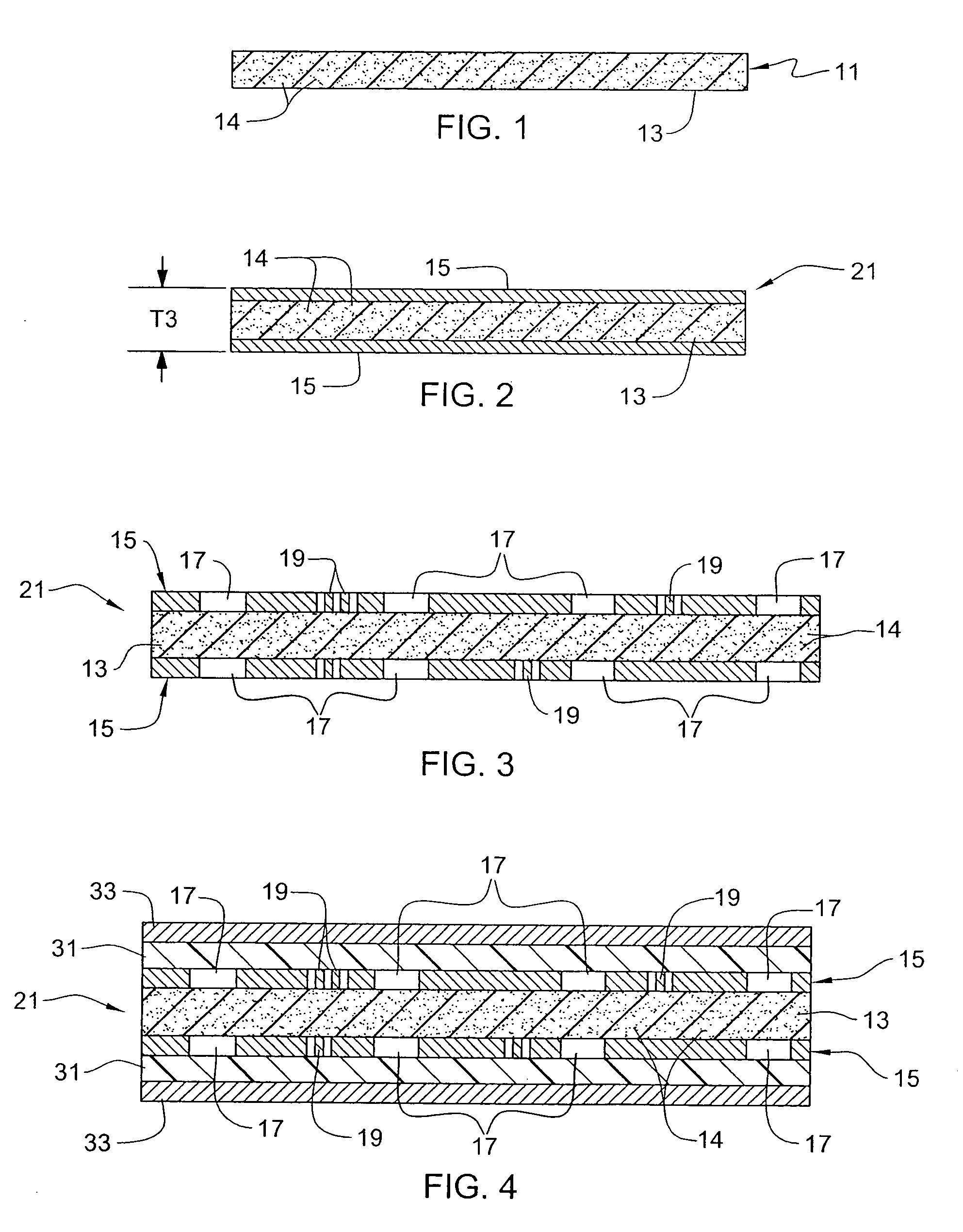Circuitized substrate with P-aramid dielectric layers and method of making same
a technology of p-aramid dielectric layer and circuitized substrate, which is applied in the direction of resistive material coating, nuclear engineering, railway components, etc., can solve the problems of increasing the relative complexity of various product designs, requiring more conductive layers and complex circuit designs, and fibrous materials occupying a relatively significant portion of the total volume of the substrate, so as to enhance the art of circuitized substrates
- Summary
- Abstract
- Description
- Claims
- Application Information
AI Technical Summary
Benefits of technology
Problems solved by technology
Method used
Image
Examples
Embodiment Construction
[0039]For a better understanding of the present invention, together with other and further objects, advantages and capabilities thereof, reference is made to the following disclosure and appended claims in connection with the above-described drawings. Like figure numbers will be used from figure to figure to identify like elements in these drawings.
[0040]By the term “circuitized substrate” as used herein is meant to include substrates having at least one (and preferably more) dielectric layer(s) of the new material defined herein and at least one (and preferably more) metal electrically conductive layer(s). It is believed that the teachings of the instant invention are also applicable to what are known as “flex” circuits.
[0041]By the term “electrical assembly” is meant at least one circuitized substrate as defined herein in combination with at least one electrical component electrically coupled thereto and forming part of the assembly. Examples of known such assemblies include chip ...
PUM
| Property | Measurement | Unit |
|---|---|---|
| thickness | aaaaa | aaaaa |
| diameter | aaaaa | aaaaa |
| diameter | aaaaa | aaaaa |
Abstract
Description
Claims
Application Information
 Login to View More
Login to View More - R&D
- Intellectual Property
- Life Sciences
- Materials
- Tech Scout
- Unparalleled Data Quality
- Higher Quality Content
- 60% Fewer Hallucinations
Browse by: Latest US Patents, China's latest patents, Technical Efficacy Thesaurus, Application Domain, Technology Topic, Popular Technical Reports.
© 2025 PatSnap. All rights reserved.Legal|Privacy policy|Modern Slavery Act Transparency Statement|Sitemap|About US| Contact US: help@patsnap.com



